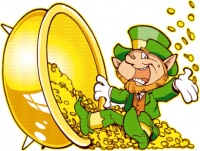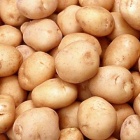From The Peopling of New York City
Contents |
St. Patrick's Day
St. Patrick's Day, anyone? This yearly event is the most well known symbol of the Irish in the United States, originating from a traditional Irish religious holiday to an opportunity to celebrate all things Irish, whether it’s the wearing of green (and the practice of pinches if not), the attending of mass or service for those who do regard St. Patrick’s Day as the feast day of Saint Patrick, one of the patron saints of Ireland, the depiction of shamrocks, the symbol of Ireland, everywhere, and the eating and drinking of Irish food and alcohol. The largest celebration of this holiday is right here in New York City, where the annual St. Patrick’s Day Parade, full of 150,000 marchers, including music bands, politicians, civic organizations, firefighters and police officers, takes place, witnessed by an average of two million people on the streets.
Public Service Workers
After the massive influx of Irish immigrants in the 1850s, many found themselves working as police officers (despite ironically more than half arrested in New York City being of Irish origin) and firefighters. During the 1900s, five out of six New York police officers and nearly half of New York City's law enforcement officers were of Irish origin and descent. This helped the Irish American become an urban, cultural icon, one that was dedicated to public service, to the enforcement of laws, the maintaining of peace and the providing of safety. As a result, many police and fire departments have organized and participate in "Emerald Societies" for American police officers and firefighters of Irish heritage, bagpipe marching groups and other organizations that proudly display their members' pride in their Irish heritage.
Sports
The Irish can be thanked for their native games of Gaelic handball (which American handball descended from!), hurling, an outdoor team sport which uses a wooden stick to hit a small ball over or under an opponent’s crossbars, Gaelic football, which combines basketball and soccer, and rounders, a bat and ball game. Irish Americans were among the earliest sports professionals in baseball, including New York Giants manager John McGraw and New York Mets groundkeeper, Pete Flynn.
Food
A very important contribution from any ethnic group, Irish food can be traced back to the agriculture-based economy of Ireland, with most of the cuisine coming from the home-grown crops and home-reared animals.
Typical Irish meals are comprised of stew, bacon, cabbage, potato pancakes, pork, seafood and corned beef.
The potato was extremely important crop in Ireland, especially for the poor who could afford it and who based their entire life meals around this tuber crop. It turned out to be good as the potato had many vitamins, minerals and carbs that humans needed, but as a result of this heavy reliance, during seasons that turned out little to no potatoes, the Irish poor simply had nothing else to eat. This happened many times in Irish history, with the worst in the late 1840s, when the potatoes were afflicted with a disease that soon spread, causing mass Irish emigration.
Bad Boy Image
There may be something to the stereotype of Irish being aggressive and violent. It most likely stems from several notorious figures of Irish heritage, such as Henry McCarty (Billy the Kid), a 19th-century American frontier outlaw, Mary Mallon (Typhoid Mary), a healthy carrier of typhoid fever that infected 53 people in her persistent occupation as a cook, members of the Irish-American mob like Eddie Cummiskey ("The Butcher") and Eddie McGrath, who controlled Hell's Kitchen in the 1940s. Even Lee Harvey Oswald, the alleged assassin of John F. Kennedy, had a great-grandmother hailing from Ireland.
- Return to Cultural Contributions
- Return to Irish

